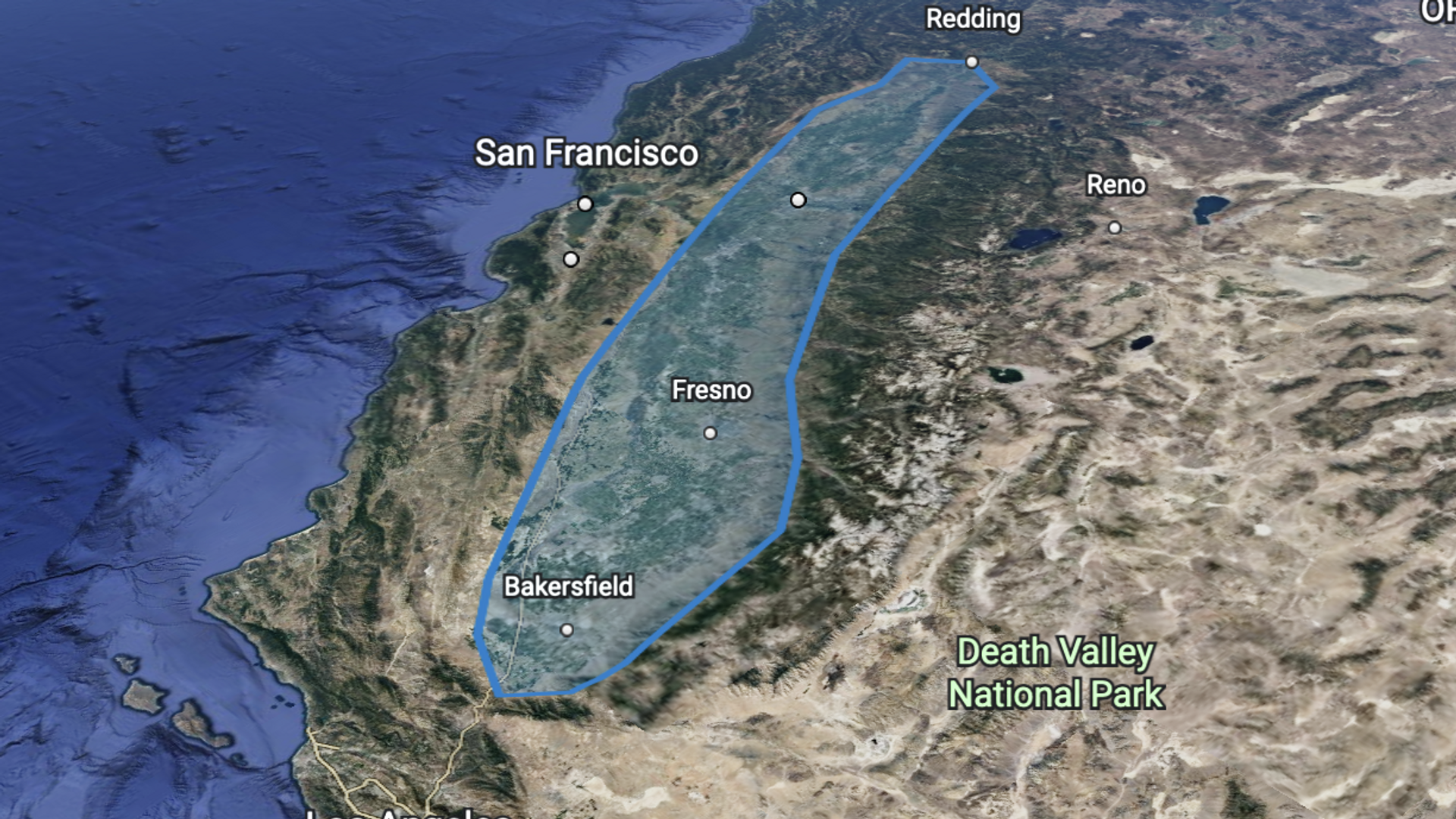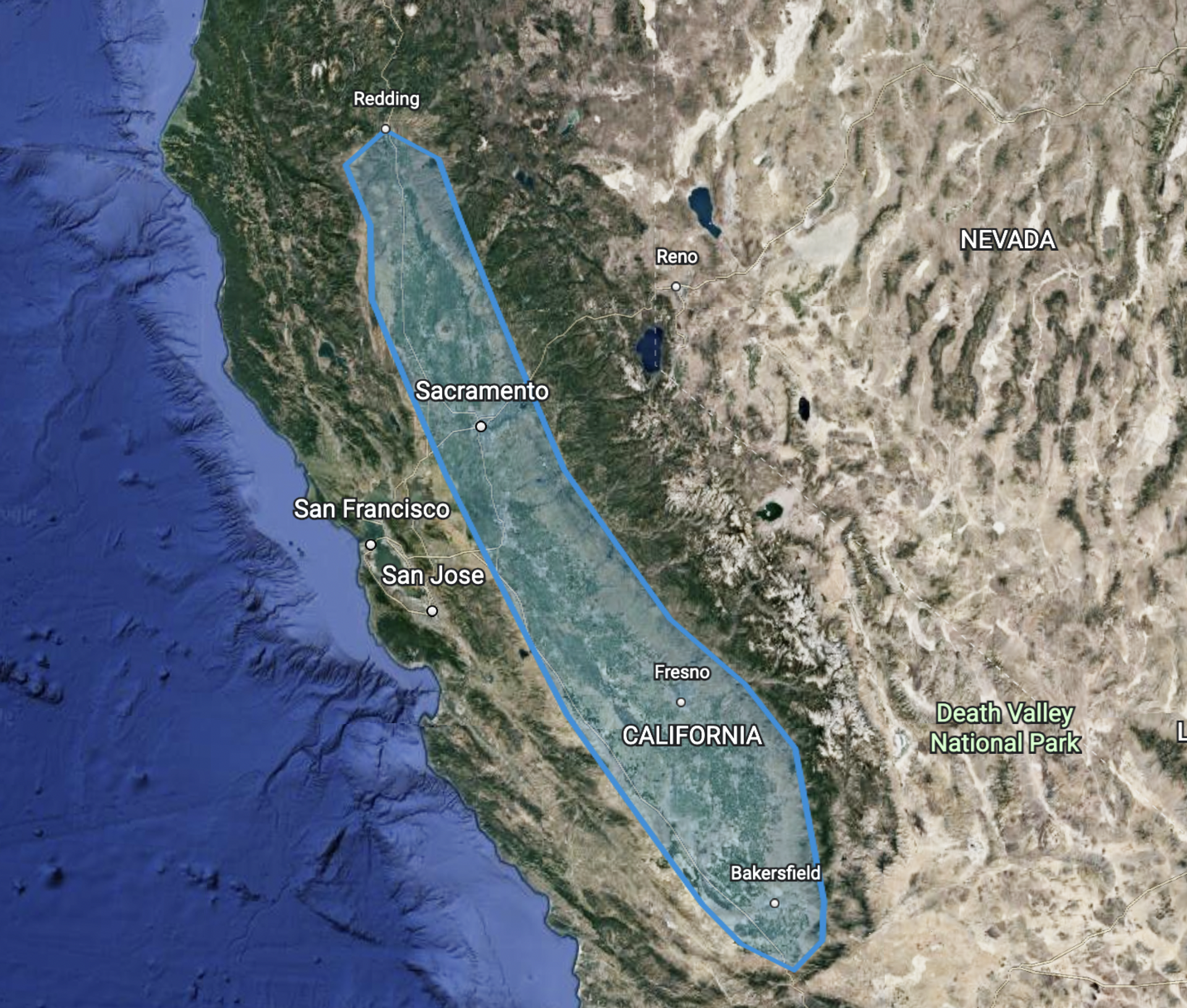https://sputnikglobe.com/20220814/the-big-one-in-california-may-be-a-megaflood-not-an-earthquake-1099563604.html
The ‘Big One’ in California May Be a Megaflood, Not an Earthquake
The ‘Big One’ in California May Be a Megaflood, Not an Earthquake
Sputnik International
Climate change is expected to bring more natural disasters, from droughts and fires to floods and hurricanes. 14.08.2022, Sputnik International
2022-08-14T02:20+0000
2022-08-14T02:20+0000
2023-02-14T08:47+0000
science & tech
california
climate change
floods
https://cdn1.img.sputnikglobe.com/img/07e6/08/0e/1099563460_0:38:1225:727_1920x0_80_0_0_fb1fe4489f4e638ef301989a571fee17.png
A new study by Science Advances contends that climate change will make a disastrous “megaflood” more likely in California in the coming years.While a megaflood sounds unlikely and might be welcomed by residents of the drought-hit state, experts say it would be disastrous, dwarfing any natural disaster ever experienced by the United States.California is susceptible to megafloods because atmospheric rivers run off the Pacific Ocean and over the state. Daniel Swain, a climate scientist at UCLA who was involved in the study says such a megaflood would appear similar to the “1,000-year” flash flood events the residents in St. Louis and Kentucky experienced earlier this year, only much larger, affecting the entire state of California.Atmospheric rivers have caused major floods in California before, but the chances of sustained atmospheric rivers dropping rain over California for weeks on end are increasing due to climate change.The Central Valley area of California would be the most affected. Experts say the low-lying area, which is responsible for more than a quarter of the nation’s food supply, would become a large inland sea after the event.The costs would be enormous, up to $1 trillion, and would dwarf the cost of Hurricane Katrina, currently the most expensive natural disaster in US history.California's Forgotten 'Megaflood' The scenario is not hypothetical. California experienced a megaflood in the past, and its results were disastrous for the state. Starting in late 1861 and ending months later, the megaflood started when 15 feet of snow was dropped on the Sierra Nevada mountain range. That was followed by 43 days of warm rain, resulting in an unfathomable amount of water rushing down the mountains and into the valleys below.Entire communities were wiped out and some areas had 30 feet of water for weeks. Farmland, infrastructure, and towns were completely destroyed. At least 4,000 people lost their lives, along with a quarter of the state’s cattle population. One in eight homes were wrecked beyond repair and the state nearly declared bankruptcy after a quarter of its taxable real estate was destroyed.Sacramento was buried under 10 feet of water for weeks, and nearby states and territories, along with Mexico, were also affected by the great flood.At the time, California was sparsely populated, housing roughly half a million residents. Today, California has over 39 million residents and its economic engine and supply chains are essential for much of the country. A megaflood today would be even more disastrous.While the researchers say another megaflood is a question of when and not if, climate change will make them more frequent and deadly. That is because warm air can hold more water vapor than cooler air, increasing 7% for each 1C the air increases.However, the study authors do not think the situation is hopeless.Combating climate change and preventing the expected increase in temperatures would also reduce the severity and frequency of megafloods.
https://sputnikglobe.com/20220810/videos-heavy-thunderstorms-drop-buckets-of-rain-on-washington-dc-flooding-city-streets-1099464356.html
https://sputnikglobe.com/20220801/videos-massive-california-wildfire-doubles-in-size-overnight-as-oregonians-grow-anxious-over-blaze-1097986922.html
Sputnik International
feedback@sputniknews.com
+74956456601
MIA „Rosiya Segodnya“
2022
News
en_EN
Sputnik International
feedback@sputniknews.com
+74956456601
MIA „Rosiya Segodnya“
Sputnik International
feedback@sputniknews.com
+74956456601
MIA „Rosiya Segodnya“
science & tech, california, climate change, floods
science & tech, california, climate change, floods
The ‘Big One’ in California May Be a Megaflood, Not an Earthquake
02:20 GMT 14.08.2022 (Updated: 08:47 GMT 14.02.2023) Climate change is expected to bring more natural disasters, from droughts and fires to floods and hurricanes.
A new study by Science Advances contends that climate change will make a disastrous “megaflood”
more likely in California in the coming years.
While a megaflood sounds unlikely and might be welcomed by residents of the drought-hit state, experts say it would be disastrous, dwarfing any natural disaster ever experienced by the United States.
California is susceptible to megafloods because atmospheric rivers run off the Pacific Ocean and over the state. Daniel Swain, a climate scientist at UCLA who was involved in the study says such a megaflood would appear similar to the “1,000-year” flash flood events the residents in St. Louis and Kentucky experienced earlier this year, only much larger, affecting the entire state of California.
"Such a flood event in modern California would likely exceed the damages from a large magnitude earthquake by a considerable margin," the study notes.
Atmospheric rivers have caused major floods in California before, but the chances of sustained atmospheric rivers dropping rain over California for weeks on end are increasing due to climate change.

10 August 2022, 23:12 GMT
The Central Valley area of California would be the most affected. Experts say the low-lying area, which is responsible for more than a quarter of the nation’s food supply, would become a large inland sea after the event.
The costs would be enormous, up to $1 trillion, and would dwarf the cost of Hurricane Katrina, currently the most expensive natural disaster in US history.
California's Forgotten 'Megaflood'
The scenario is not hypothetical. California experienced a megaflood in the past, and its results were disastrous for the state. Starting in late 1861 and ending months later, the megaflood started when 15 feet of snow was dropped on the Sierra Nevada mountain range. That was followed by 43 days of warm rain, resulting in an unfathomable amount of water rushing down the mountains and into the valleys below.
Entire communities were wiped out and some areas had 30 feet of water for weeks. Farmland, infrastructure, and towns were completely destroyed. At least 4,000 people lost their lives, along with a quarter of the state’s cattle population. One in eight homes were wrecked beyond repair and the state nearly declared bankruptcy after a quarter of its taxable real estate was destroyed.
Sacramento was buried under 10 feet of water for weeks, and nearby states and territories, along with Mexico, were also affected by the great flood.
At the time, California was sparsely populated, housing roughly half a million residents. Today, California has over 39 million residents and its economic engine and supply chains are essential for much of the country. A megaflood today would be even more disastrous.
While the researchers say another megaflood is a question of when and not if, climate change will make them more frequent and deadly. That is because warm air can hold more water vapor than cooler air, increasing 7% for each 1C the air increases.
However, the study authors do not think the situation is hopeless.
"I think the extent of losses can be significantly reduced by doing certain sorts of things to revamp our flood management and our water management systems and our disaster preparedness," Swain said.
Combating climate change and preventing the expected increase in temperatures would also reduce the severity and frequency of megafloods.






